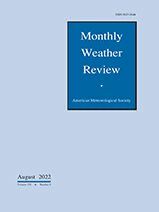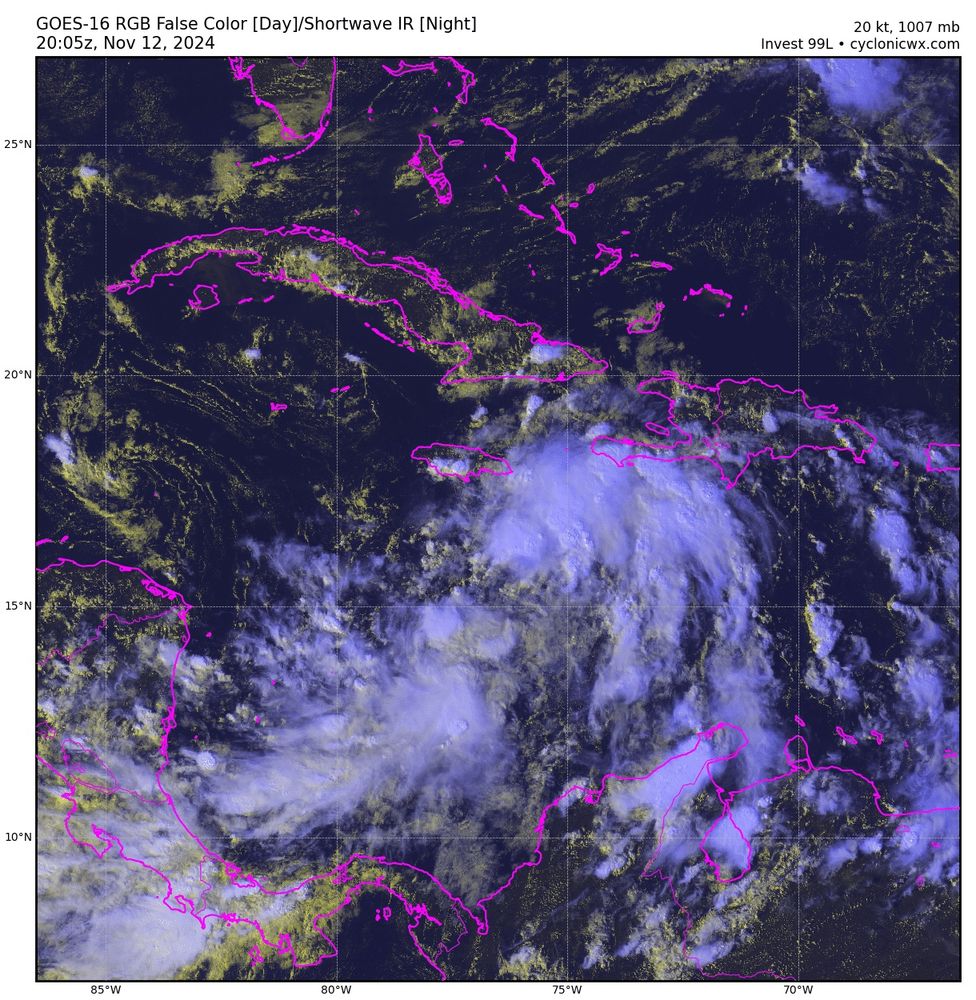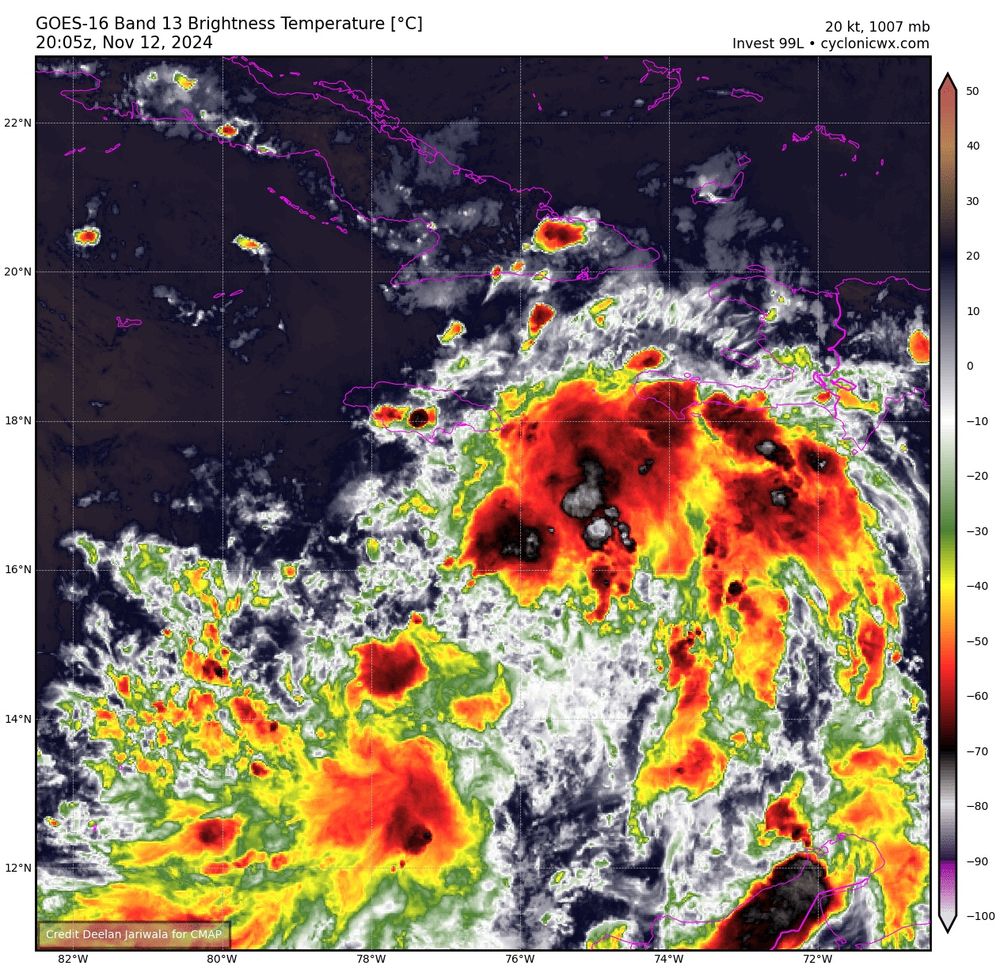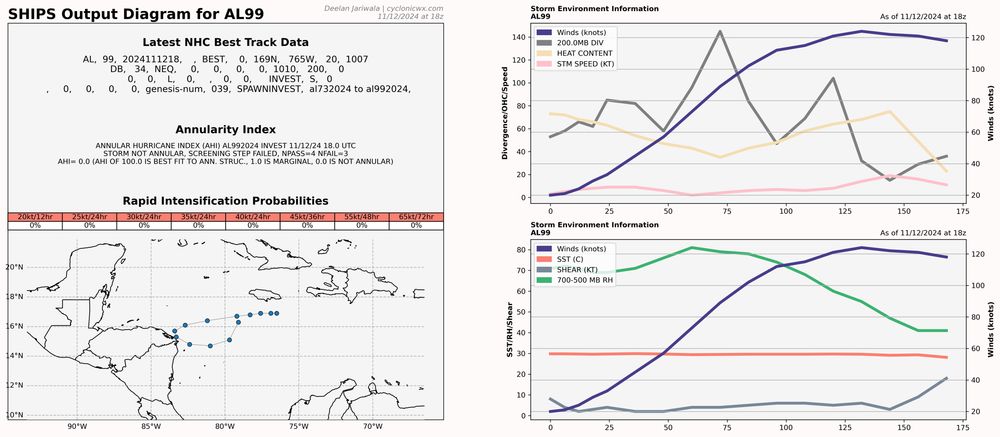
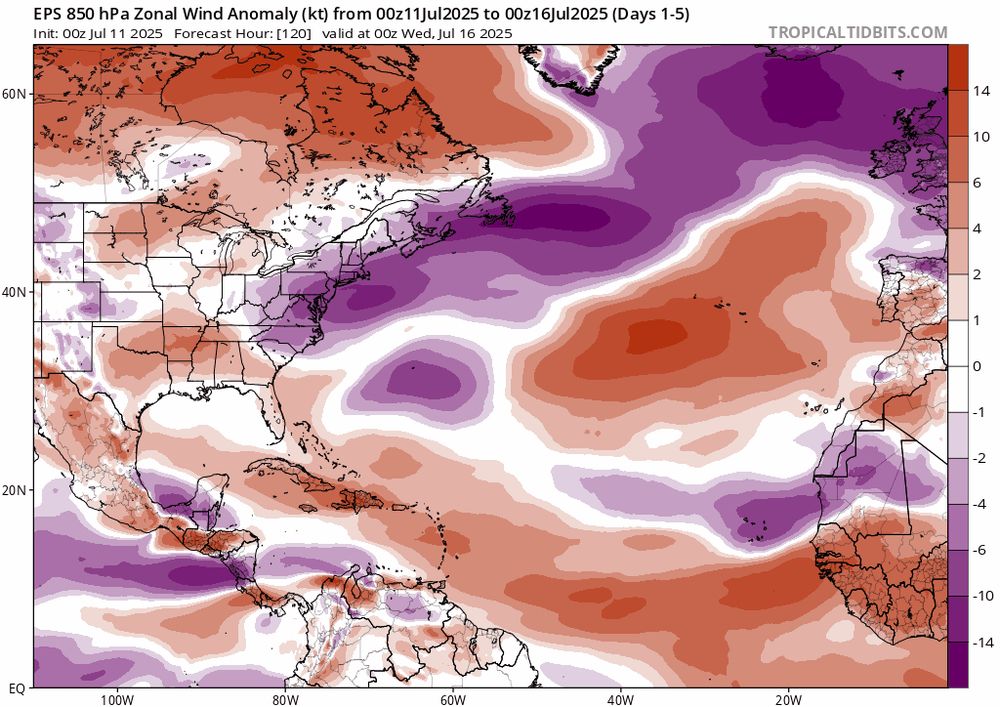
With anomalously weak trade winds, the eastern Main Development Region of the Atlantic has rapidly warmed over the last two weeks. Models suggest this flow pattern should largely continue, favoring additional warming.
11.07.2025 14:42 — 👍 4 🔁 1 💬 0 📌 0
As of 6am CST 18 June #Erick is now a #hurricane & is likely starting rapid intensification, #RI, as a central dense overcast, #CDO, forms over the center.
Hurricane warnings in effect for coastal #Mexico from Acapulco to Puerto Angel & Erick forecast to be near major hurricane at landfall.
18.06.2025 12:00 — 👍 29 🔁 6 💬 1 📌 1

Stand Up for NOAA Research – The Time to Act is Now
The AMS is a global community committed to advancing weather, water, and climate science and service.
The 2026 budget passback plan calls for eliminating NOAA Research, the scientific backbone that keeps weather forecasts, alerts, and warnings accurate and effective. This would have disastrous consequences.
Read the AMS statement, in partnership w/ @nwas.org: bit.ly/4cz2RtC
17.04.2025 18:41 — 👍 850 🔁 496 💬 25 📌 33
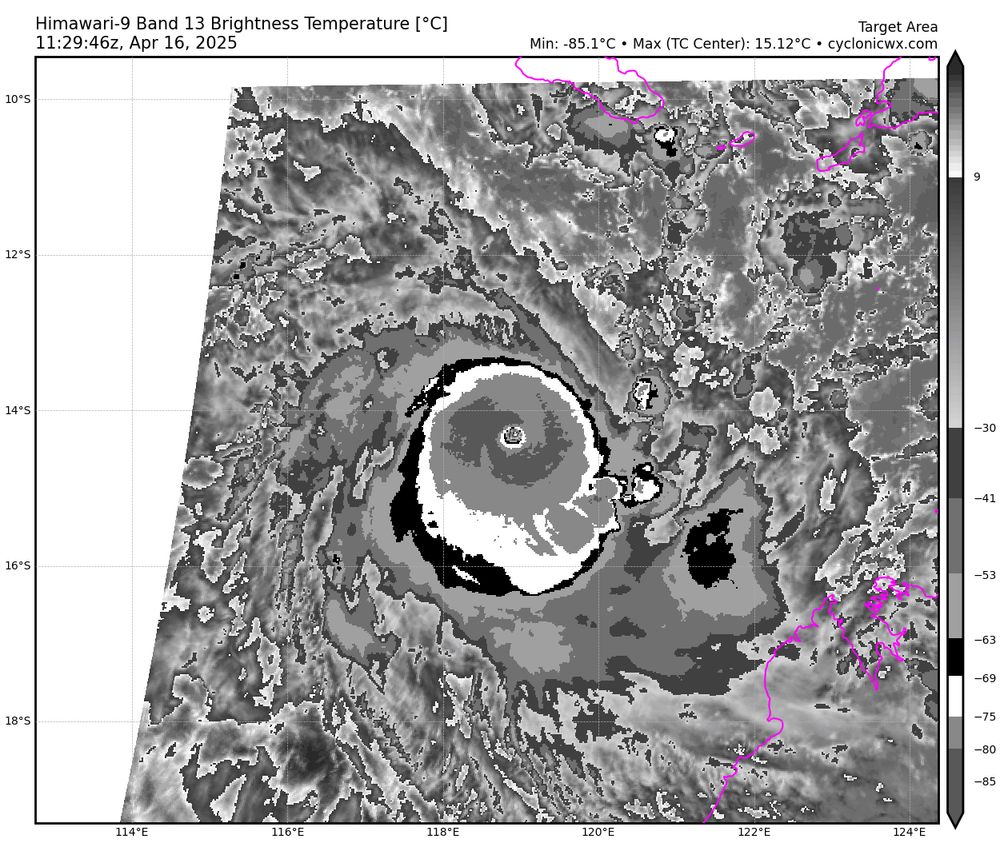
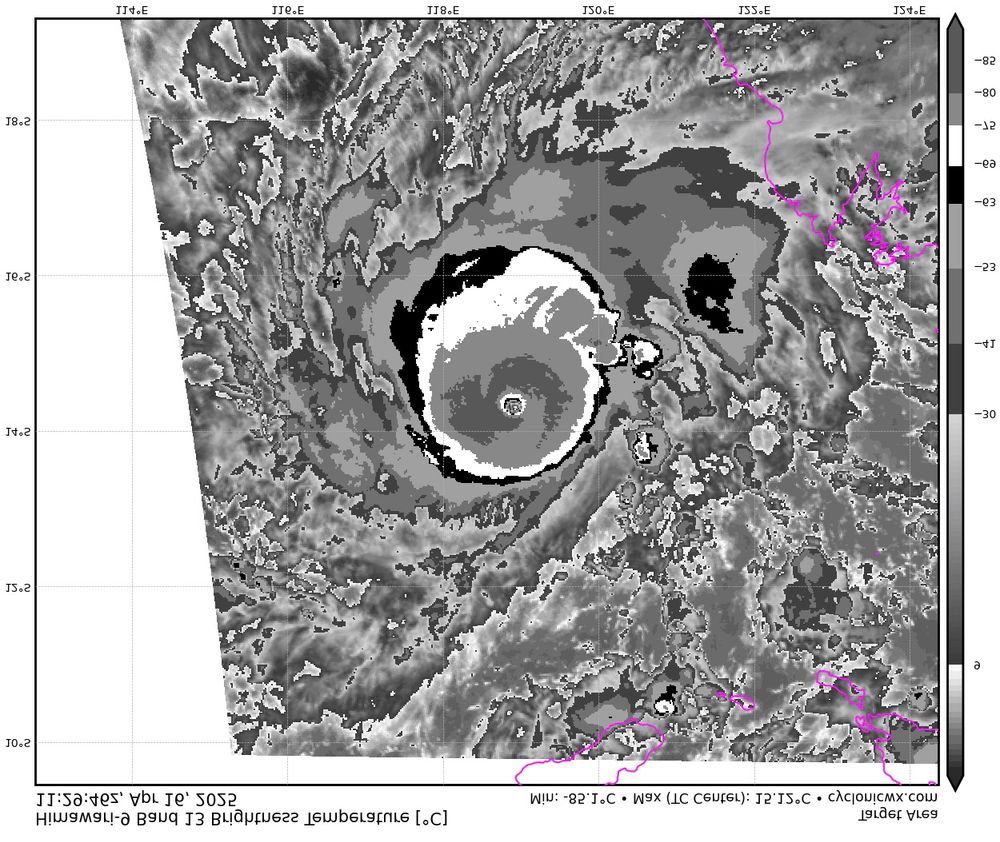
Cyclone Errol is an extremely powerful storm. IR brightness temps in the eye are quite warm for a core that small. Reminds me of Milton in the Atlantic last year. And for my northern hemisphere friends, I have rotated the IR pattern to be consistent with a positive Coriolis value in the 2nd image.
16.04.2025 12:02 — 👍 13 🔁 5 💬 0 📌 2
68,845,865.
That's how many individuals in the United States speak a language other than English at home.
Everyone deserves a chance to stay safe during disasters, and I will never stop advocating for that. Thinking of all the communities that are going to be affected by this change.
01.04.2025 21:53 — 👍 183 🔁 101 💬 3 📌 2
Thank you to UAH for the opportunity and hospitality during my visit. I had a great time talking about hurricanes and machine learning with the folks there. And a special thanks to @tcblers.bsky.social for the invitation and a great time in Huntsville!
28.03.2025 13:47 — 👍 4 🔁 1 💬 0 📌 0
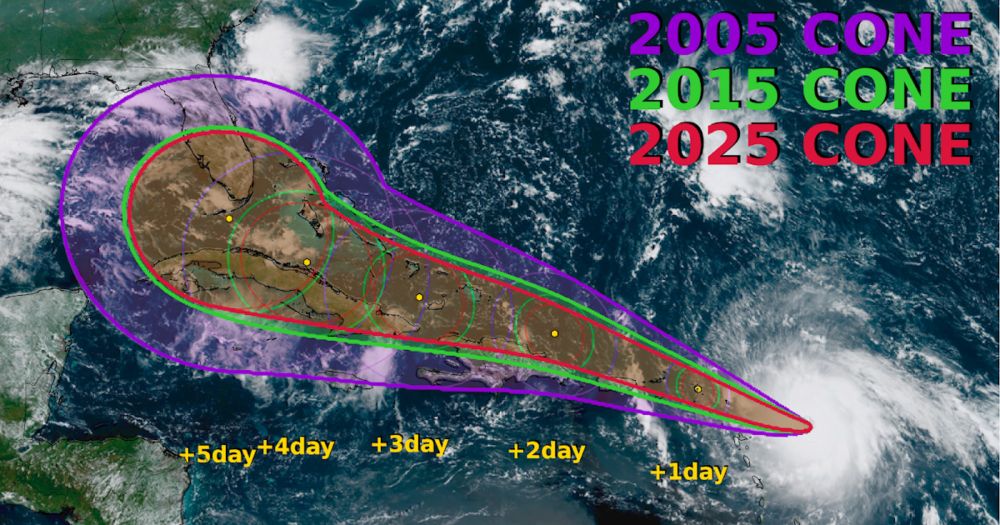
2025 "Cone of Uncertainty" Update & Refresher
Updates and summaries on tropical Atlantic activity... including easterly waves, tropical storms, subtropical storms, and hurricanes.
Here's my annual blog post about the NOAA National Hurricane Center's updated "cone of uncertainty". Hopefully there are some tidbits in there that are new to you! Atlantic hurricane season begins June 1 and ends November 30.
bmcnoldy.blogspot.com/2025/03/2025...
07.03.2025 20:47 — 👍 62 🔁 26 💬 3 📌 1
Probationary employees across @NOAA and the @NWS are being terminated today, including those in mission-essential roles.
My own wife is among them, essential to the Pacific Tsunami Warning Center's 24/7 critical mission of seismic monitoring and tsunami prediction to protect the public.
27.02.2025 22:10 — 👍 445 🔁 234 💬 21 📌 27
Uh oh. Zelia is explosively intensifying at this point. The enclosed pink ring in 36 GHz imagery is typically a signal only seen in extremely intense TCs or those about to be extremely intense.
12.02.2025 21:16 — 👍 11 🔁 3 💬 0 📌 0
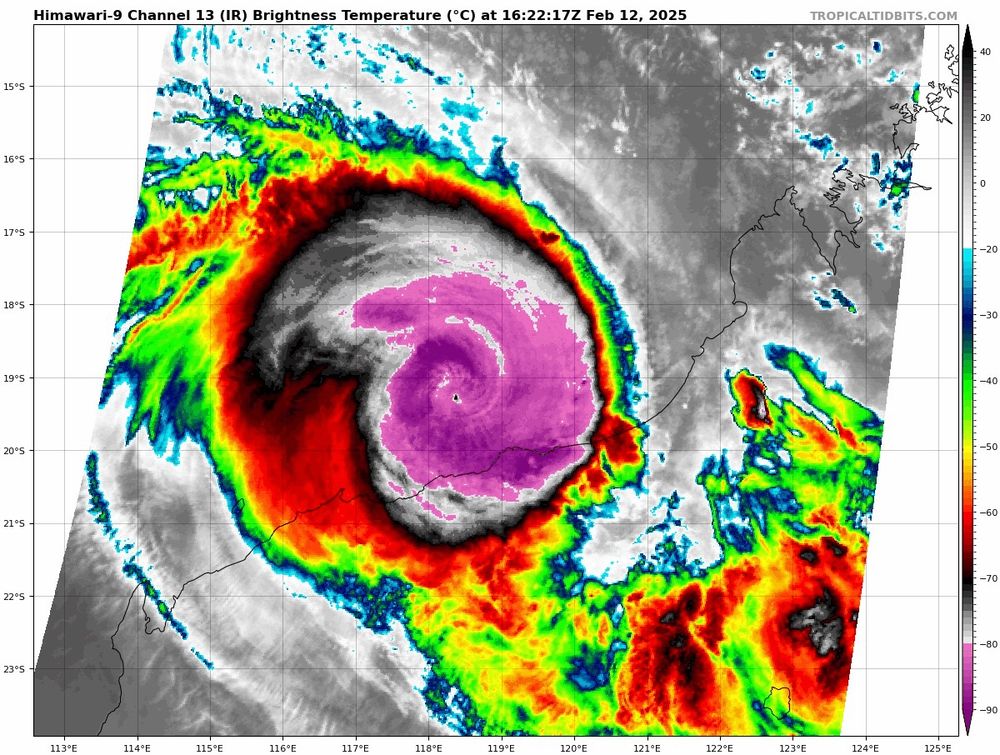
Off the northwest coast of Australia, Cyclone Zelia appears to be intensifying quite quickly. Some of the hurricane guidance brings the system up to the equivalent of category-5 intensity before landfall. Hopefully that’s overly aggressive.
12.02.2025 17:08 — 👍 8 🔁 4 💬 1 📌 1
Just feel like I’m stuck in a nightmare that I’m not waking up from. What was egregious yesterday is tame today. When will it stop?
05.02.2025 04:09 — 👍 16 🔁 2 💬 0 📌 0
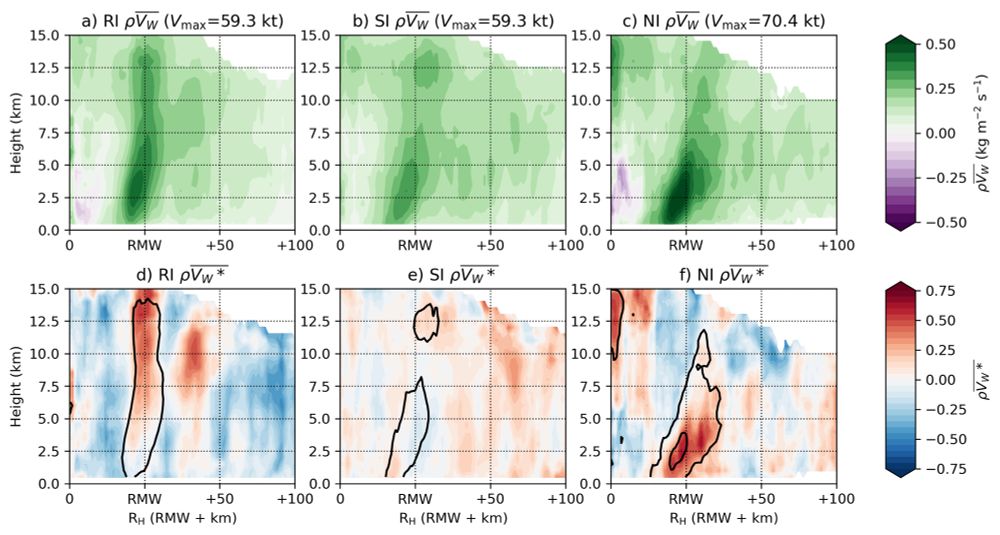
To summarize: RI tends to occur in vortices that are anomalously tall and narrow and in TCs with anomalously deep convection in the TC inner core. We hypothesize this helps evacuate mass out of the boundary layer, leading to the inward advection of angular momentum surfaces.
13.12.2024 22:32 — 👍 6 🔁 0 💬 0 📌 0
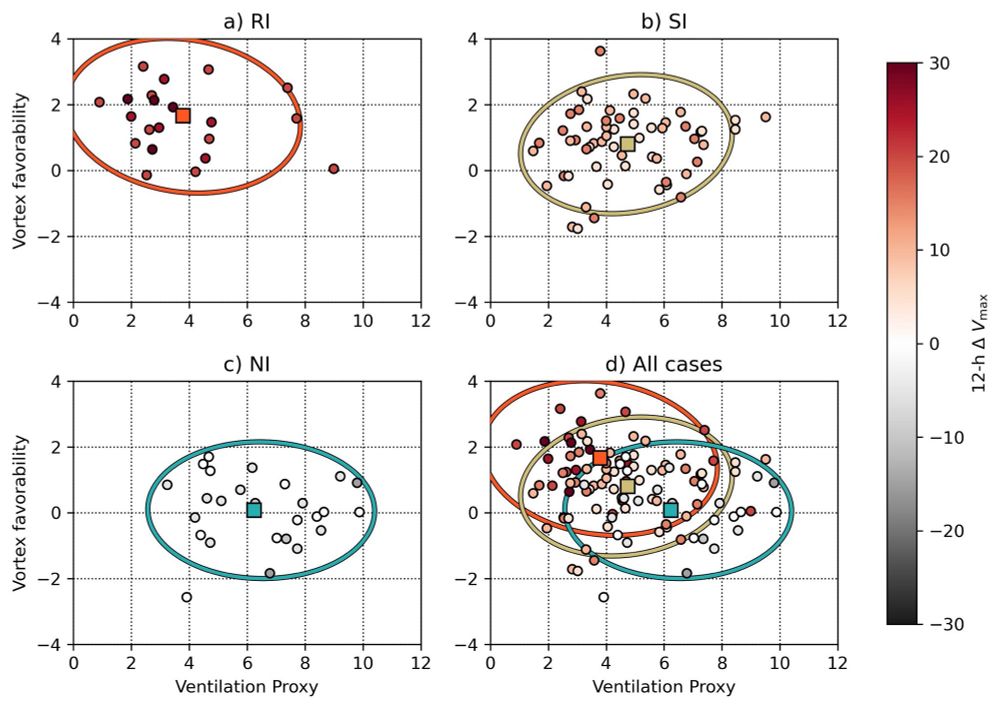
Based on those purple boxes above, we compute a metric of "vortex favorability" for RI. When plotted versus a metric of environmental favorability (smaller values of the "ventilation proxy" here), you can see RI occurs preferentially in certain vortex structures and environments.
13.12.2024 22:32 — 👍 3 🔁 0 💬 1 📌 0
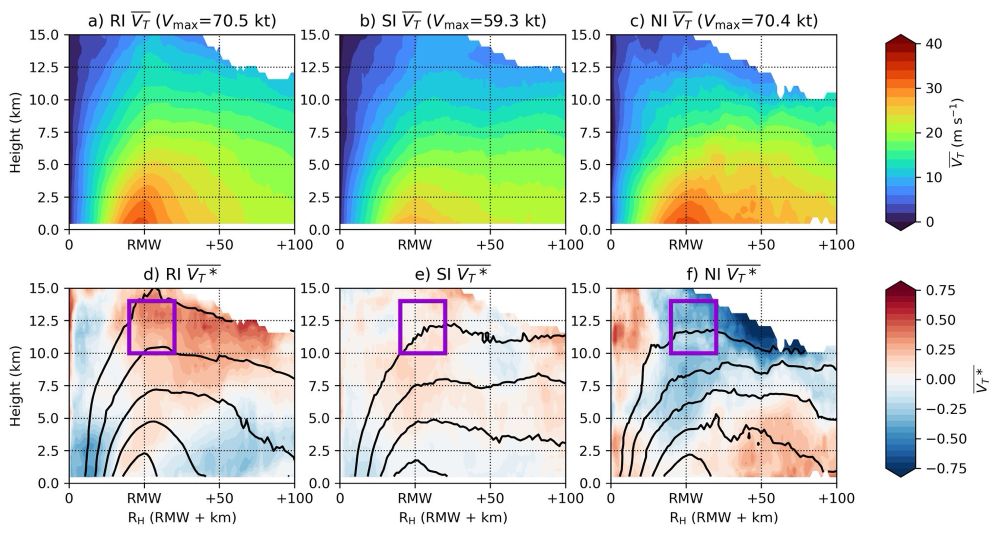
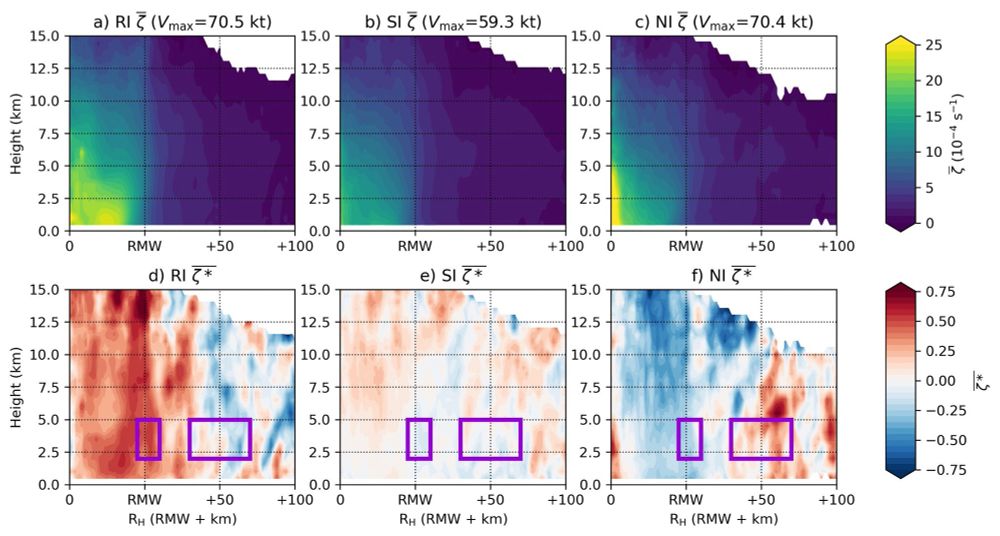
It turns out that the anomalous TC structure (relative to TC intensity) is closely related to the rate of intensity change. For example, here are composites of the observed and anomalous azimuthally-averaged tangential wind and vorticity for each intensity change group.
13.12.2024 22:32 — 👍 0 🔁 0 💬 1 📌 0
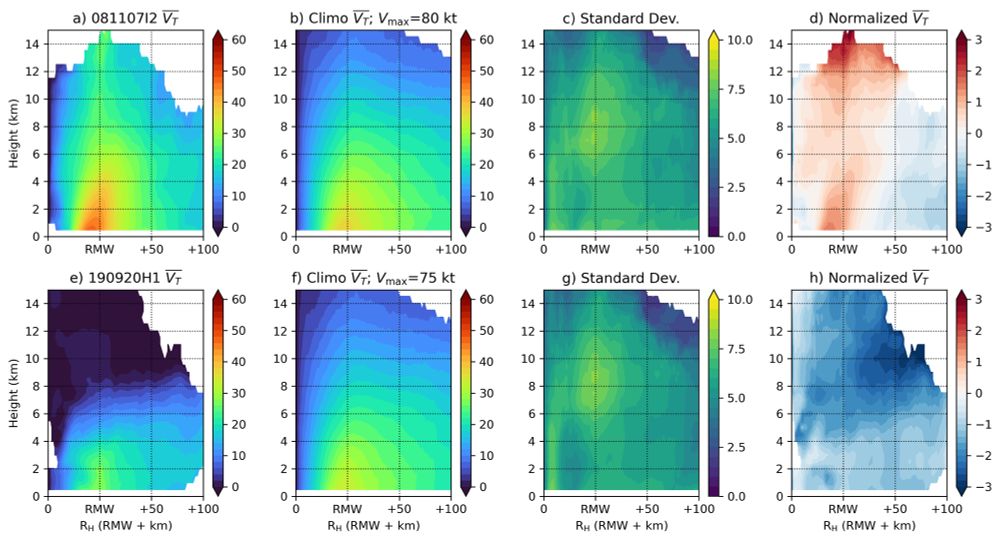
One problem: TC vortex and convective characteristics are closely related to TC intensity.
Our approach: Normalize these characteristics and explore the anomalous aspects. For example, here are standardized anomalies of azimuthally-averaged tangential wind for two cases.
13.12.2024 22:32 — 👍 0 🔁 0 💬 1 📌 0
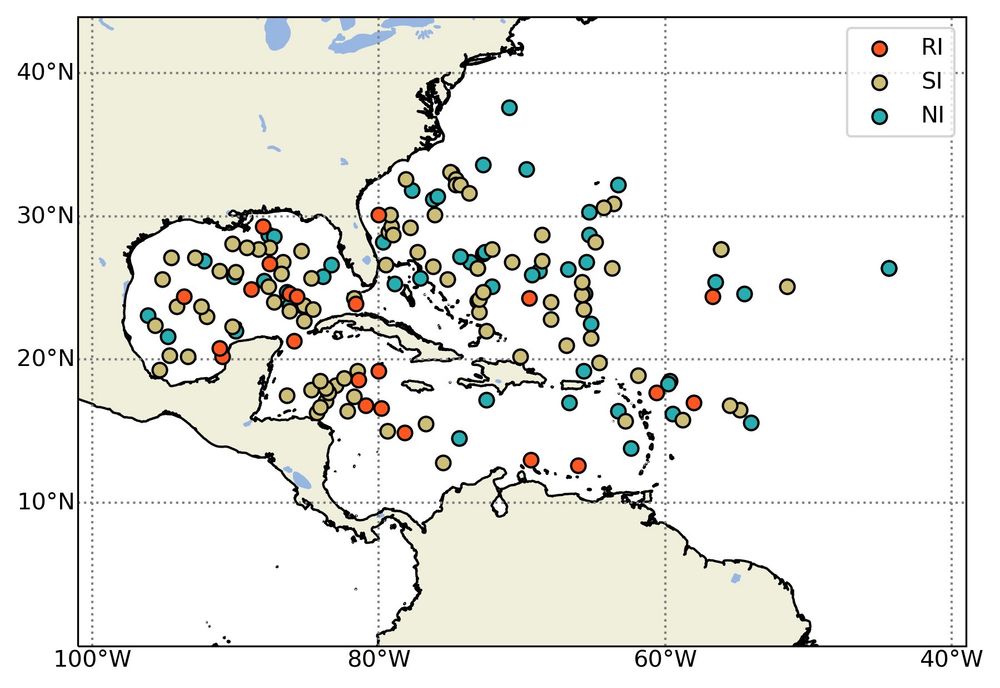
Here, we use TC-RADAR, which is a collection of over 1,100 airborne Doppler radar analyses of TCs sampled by NOAA aircraft over the last three decades to answer this question. We compare rapidly intensifying (RI), slowly intensifying (SI), and non-intensifying (NI) TCs.
13.12.2024 22:32 — 👍 0 🔁 0 💬 1 📌 0
Xiaomin is an excellent scientist and friend of mine. If you’re interested in atmospheric science and grad school, here’s another great opportunity to explore.
12.12.2024 17:24 — 👍 6 🔁 0 💬 1 📌 0
Congratulations, Philippe! Keep up the great work!
19.11.2024 02:12 — 👍 1 🔁 0 💬 0 📌 0
The Philippines have now been hit by four typhoons in the span of just 10 days.
Can't say I recall ever seeing this before.
17.11.2024 11:35 — 👍 2159 🔁 962 💬 71 📌 158
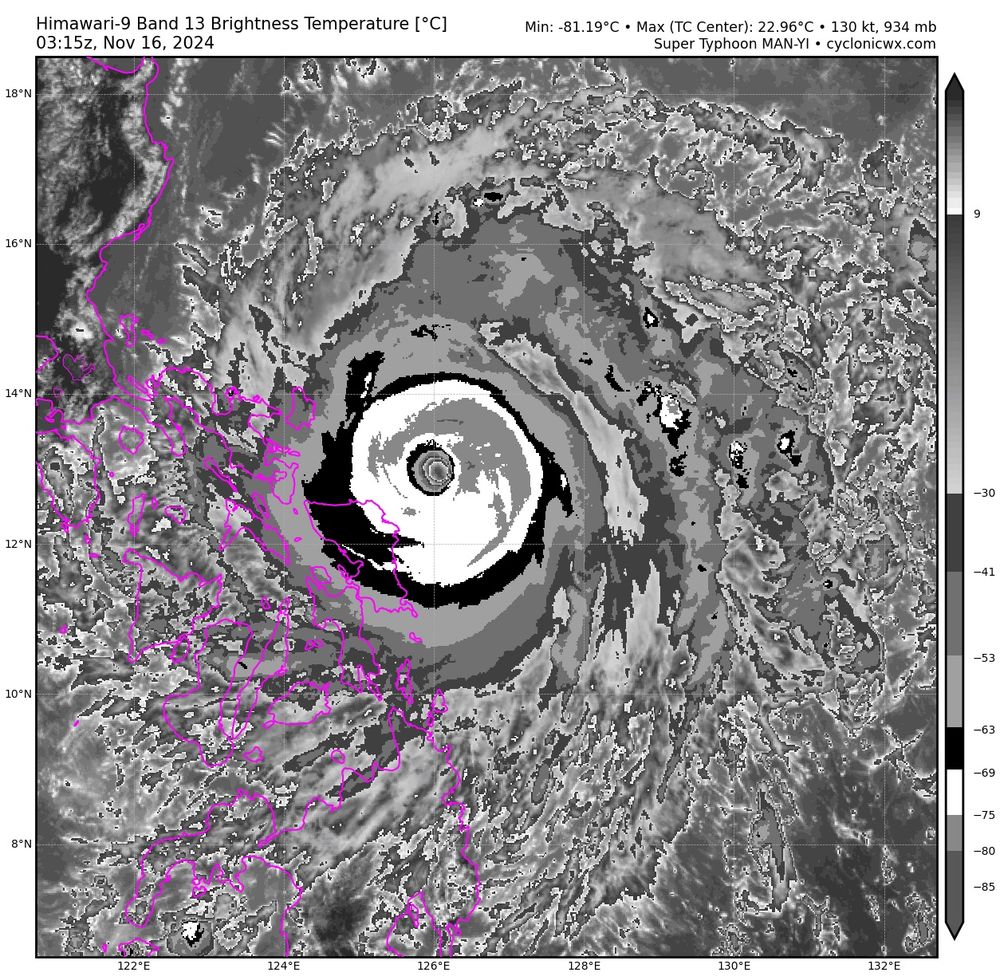
23C IR temp in the eye of Typhoon Man-Yi is very impressive! An extremely powerful typhoon approaching The Philippines.
16.11.2024 03:38 — 👍 11 🔁 2 💬 0 📌 0

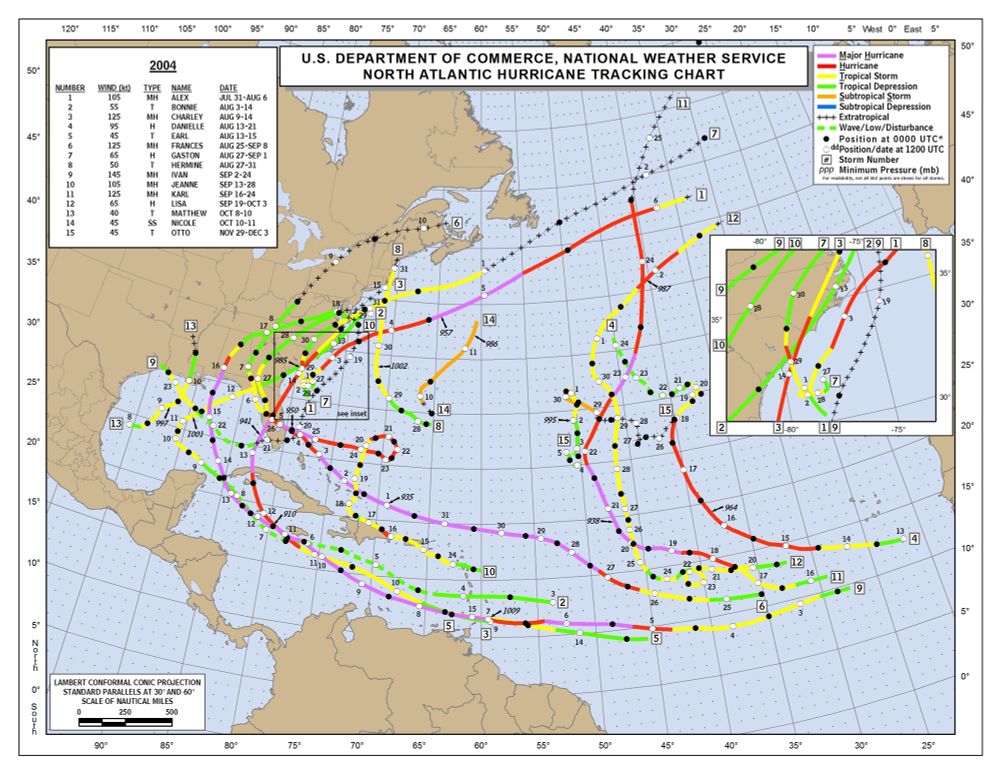
Interestingly, the NW Caribbean and eastern Gulf of Mexico has been a hot spot for TC activity this year and that will only continue with the expected development of 99L. The westward focus of TC activity and overall spatial distribution reminds me a bit of 2004, which was also a busy year for FL.
12.11.2024 20:31 — 👍 5 🔁 0 💬 0 📌 0

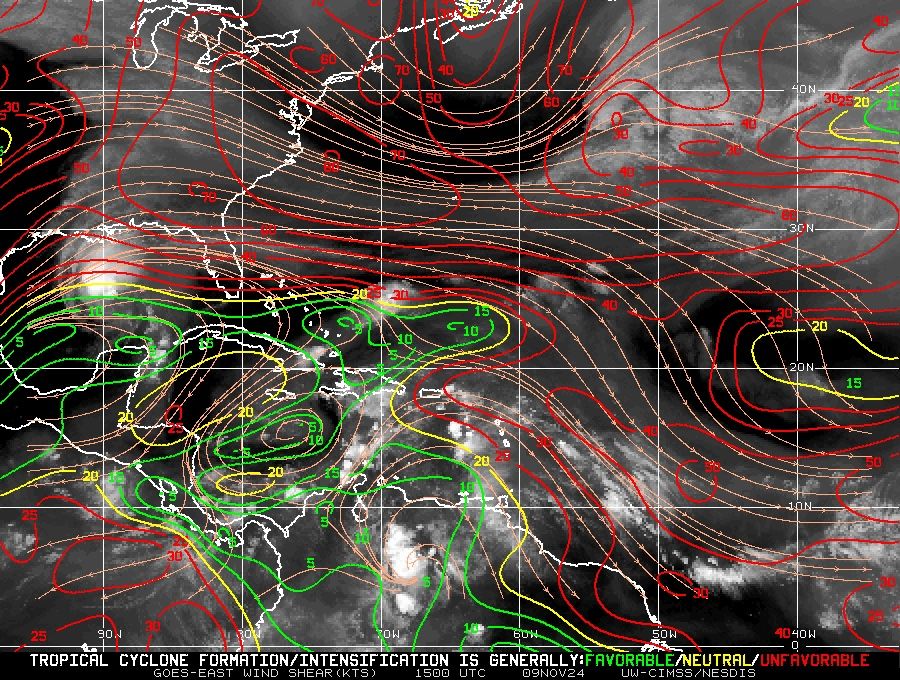
Interesting low/trough near 70W and 25N this morning. Waters are still pretty warm in this area and there's ongoing deep convection with lightning (yellow markers). The disturbance is currently located on a sharp gradient of vertical wind shear.
09.11.2024 16:19 — 👍 7 🔁 1 💬 0 📌 1
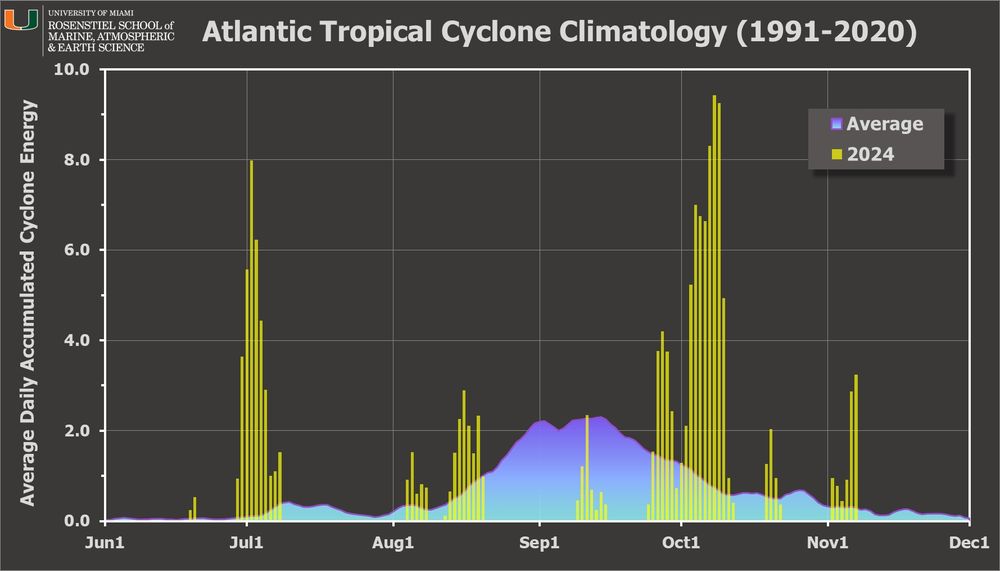
This chart really highlights how strange this season has been with an explosive beginning, a quiet mid-section, and an active ending. Not every year follows the climatological curve!
bmcnoldy.blogspot.com/2024/11/rafa...
#HurricaneSeason
@miamirosenstiel.bsky.social
07.11.2024 23:26 — 👍 99 🔁 20 💬 5 📌 1
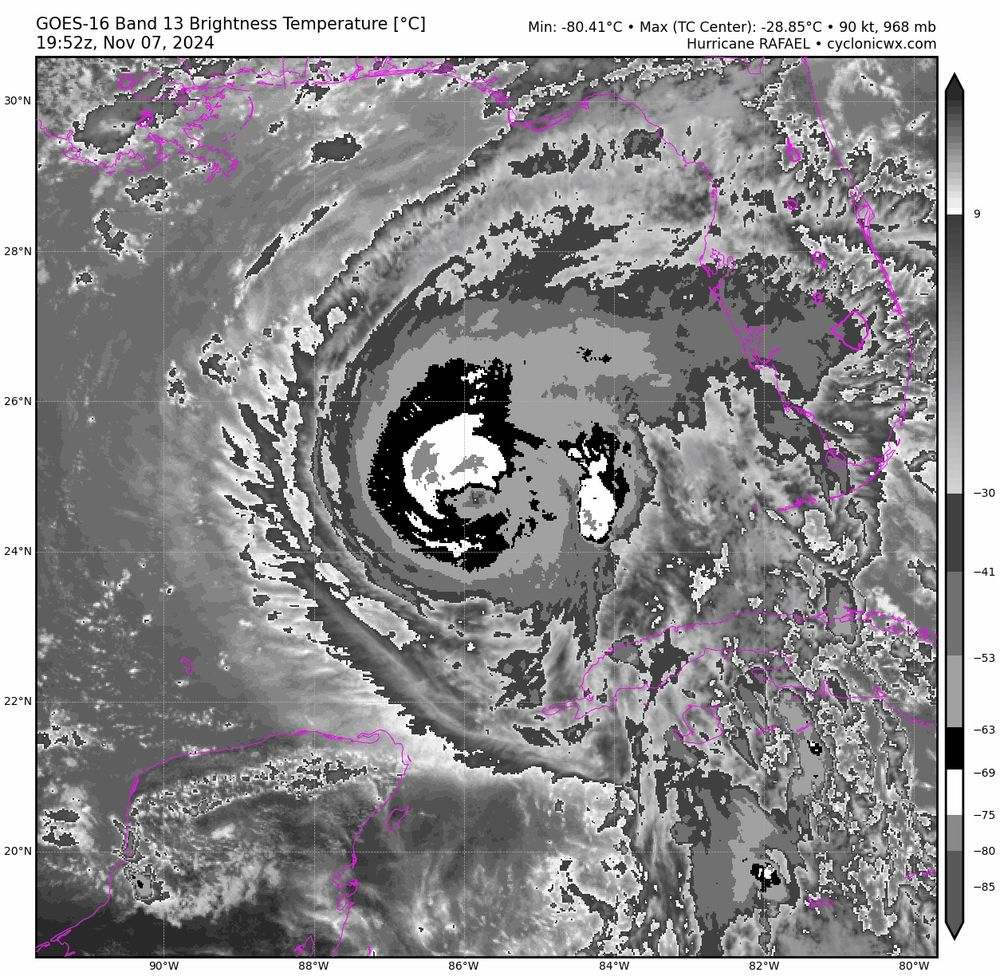
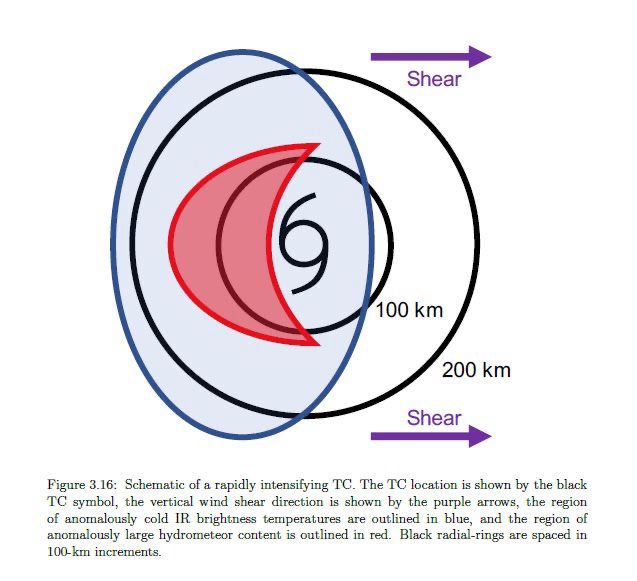
Hurricane Rafael has an interesting satellite appearance, with the coldest IR brightness temperatures on the upshear side of the storm. That’s usually a pattern we see with intensifying storms (fig. is from my dissertation), however, guidance suggests we will see a period of weakening soon. Hmm…
07.11.2024 21:20 — 👍 10 🔁 2 💬 0 📌 0
Sorry for the slow response! The chart on the right shows the output from an ensemble of model simulations (essentially a range of possibilities). The red numbers correspond to the value of the low pressure in each model. Basically each red number indicates a possible low (TC) location.
24.10.2024 00:37 — 👍 2 🔁 0 💬 1 📌 0
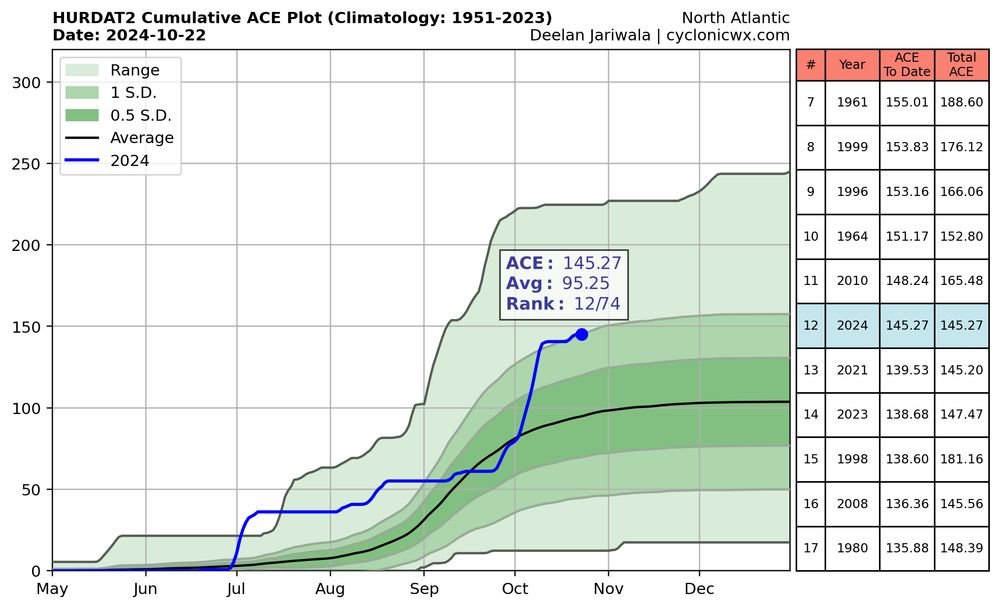
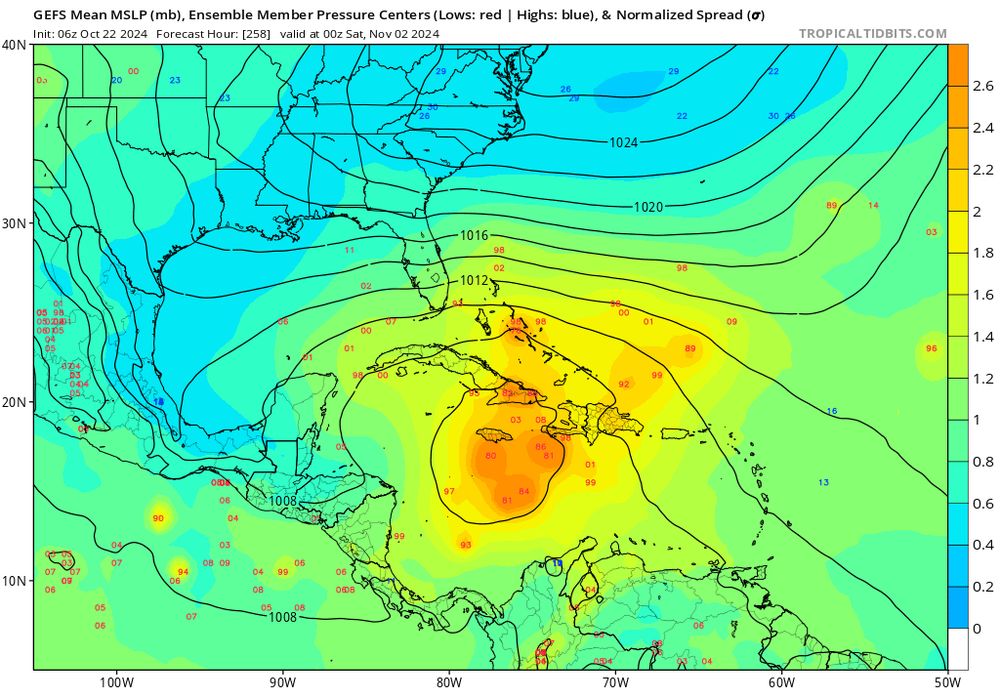
With model guidance suggesting the potential for another TC in the Caribbean in 1-2 weeks, I’m wondering if the Atlantic this year may actually reach NOAA’s “extremely active” definition of approximately 160 ACE units. Only 15 units to go. What a weird season.
22.10.2024 13:15 — 👍 16 🔁 3 💬 1 📌 0

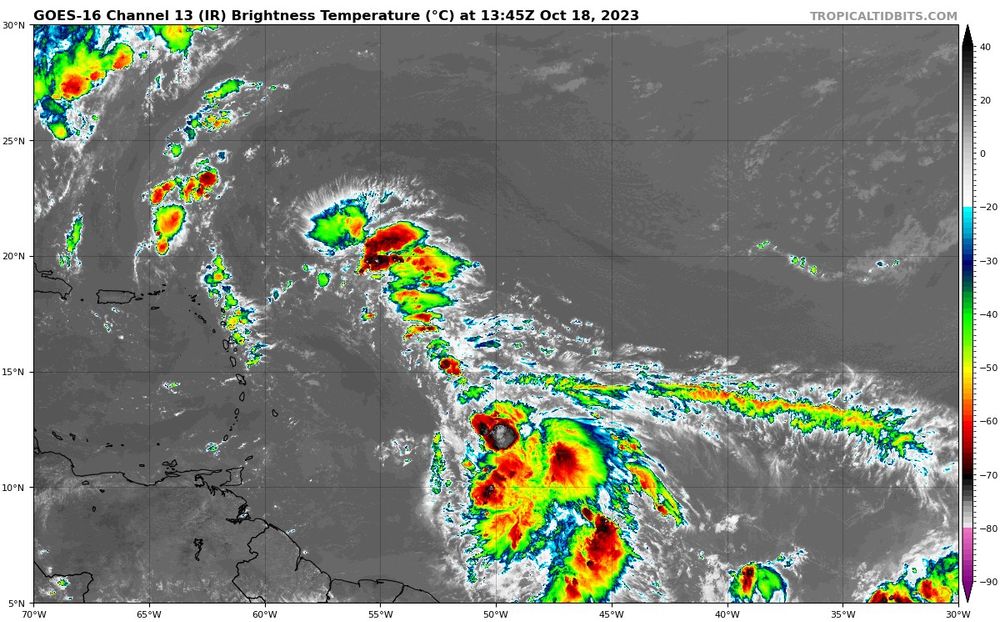
Very curious to see what comes of Invest 94L. Looks very close to official TC status, but it’s unclear how much this system will intensify (if at all). Models are in better agreement of a weak/moderate tropical storm, outside of the GFS, which has done very poor with TC genesis forecasts this year.
18.10.2023 14:04 — 👍 3 🔁 0 💬 0 📌 0
Catholic | Father | Husband | Aggie | Atmospheric Scientist | Director of OU School of Meteorology | GridRad Developer | Homebrewer. I study convection, chemistry, and climate.
35 year meteorologist in warning/forecast provision and research, now CEO of Balanced Weather LLC, Disney/Peanuts fan, golfer, sports fan, TK Little. For more weather info go to https://balancedweather.substack.com/about
Skeet about markets and political corruption
Discord: http://bit.ly/3Bf2pNJ
Links: http://bit.ly/3V8D6Gb
Get $50-$5000 to trade: http://bit.ly/4ayctTD
Incoming Assistant Professor at the University of Illinois Department of Climate, Meteorology, and Atmospheric Sciences (⛈️) and Department of Communication (⚠️). Bilingual Digital Meteorologist at MyRadar. linktr.ee/latinwx
Syndication of NWS Storm Prediction Center content via IEMBOT. @akrherz.bsky.social is my father
Reader, writer, dog lover, Ph.D. Most recent book: You Have a Calling: Finding Your Vocation in the True, Good, and Beautiful. Find me on Substack at The Priory.
Operational forecaster in the private sector | Millersville University Alum | Tortured Saints fan and fan of spinning clouds
Meteorologist | Hurricane Chaser | 📺 WX
Previously at NBC Weather+, CBS Miami & Tampa, ABC West Palm, UMiami Rosensteil
🎙️ MeteorologyMatters.com
🌎 BroadcastMeteorologist.com
25 Year veteran insurance industry meteorologist. Natural hazards, weather, climate, catastrophe risk management and modeling. Building codes and resilience. Expect the occasional pupnado pic. Meteorologist for Munich Re US. All opinions my own. 🏳️🌈🇺🇦
Assistant Professor of Chemistry @Wesleyan_U. 🇲🇽🐏🦉🧜♂️ ⚓️ Views are my own. https://www.nanogoch.org/
atmospheric sciences research scientist. I think about rain and I love clouds. 🦓 (she/her)
Severe Storms Meteorologist - wife/mom - ENTP - reading connoisseur - music lover - STL sports. Thoughts mine, not employers.
2025 Read Goal: 33/90
Current 📖: Not Quite By The Book
Professor of Marketing at NYU Stern School of Business, serial entrepreneur, and host of the Prof G and Pivot Podcasts.
SUNY Albany PhD Candidate | BS Iowa State 2020 | Interested in TCs, extreme precip, forecast verification, predictability & my kitties Rory & Gus 🧶 🌧
Purdue U. grad, retired meteorologist (47 yrs with AccuWeather), Expert in hurricane forecasting and severe weather. Interests: Astronomy, Biking,Hiking,History,Nutrition(Plant Based Whole Food)
Assistant Professor in Physics, University of Toronto. Climate scientist. Settler. Thoughts my own.
Stop the genocide! Free Palestine!
M.S. Student @CSUAtmosSci | B.S. Civil Engineering University of Florida 🐊| he/him














